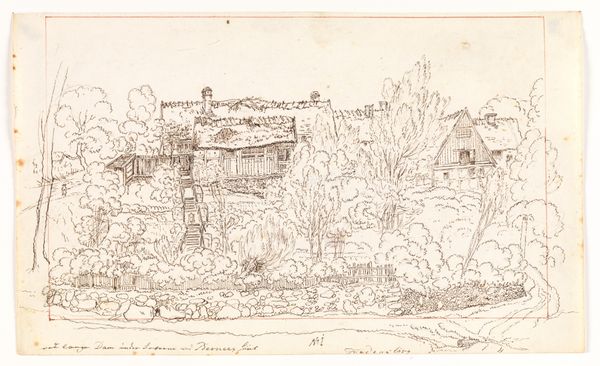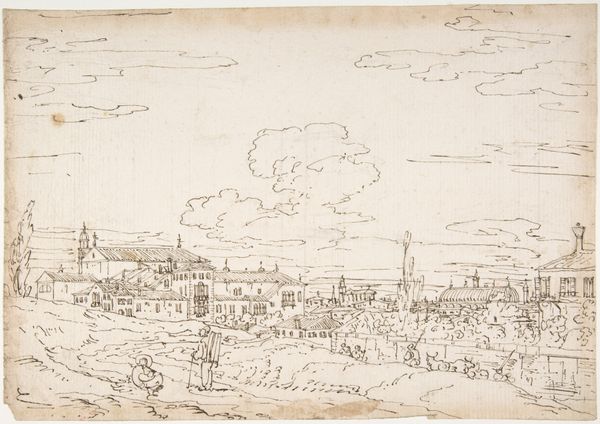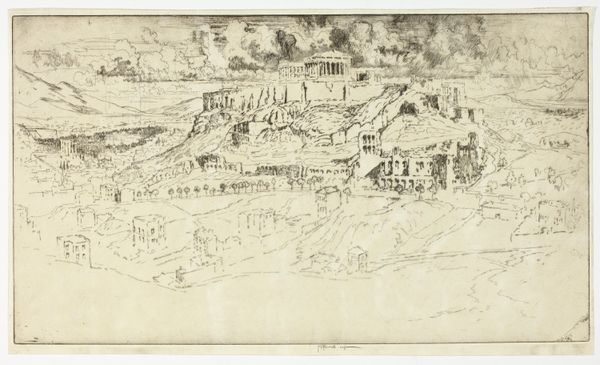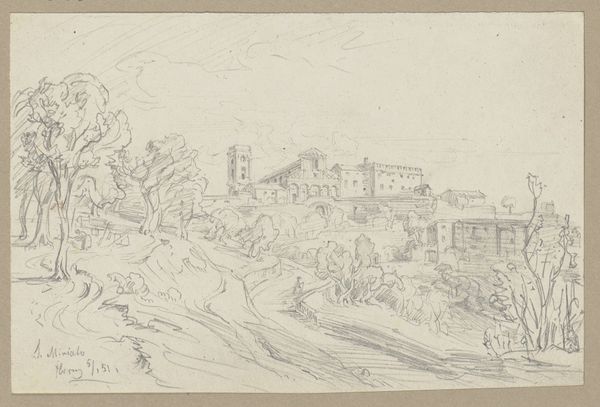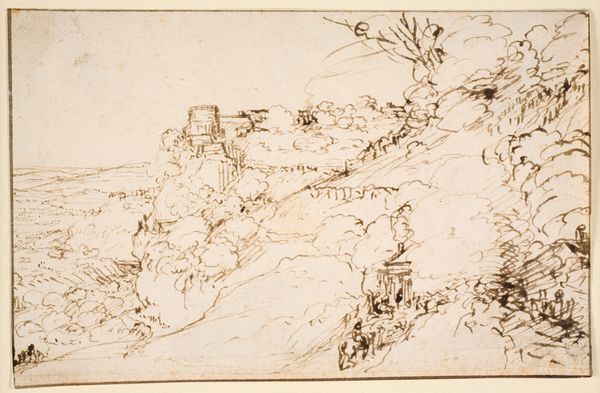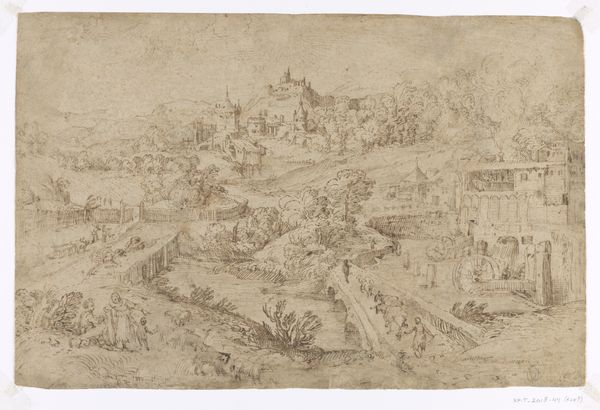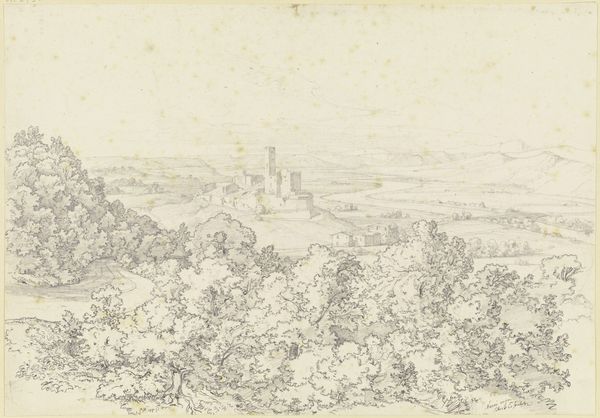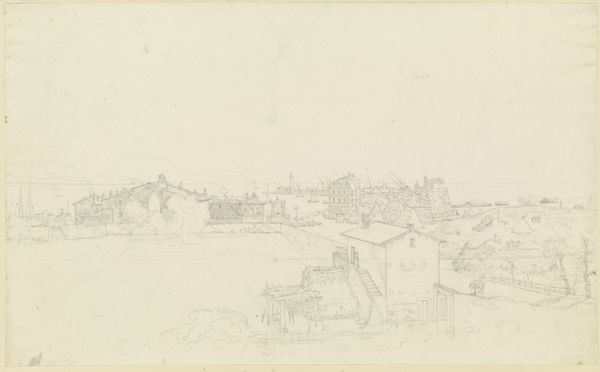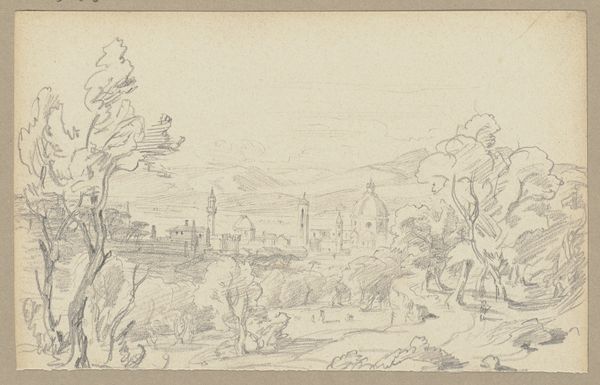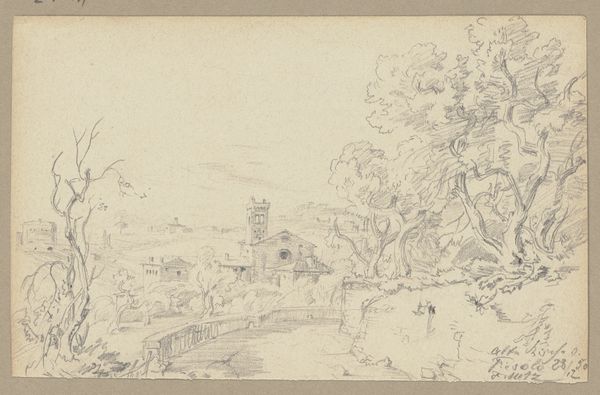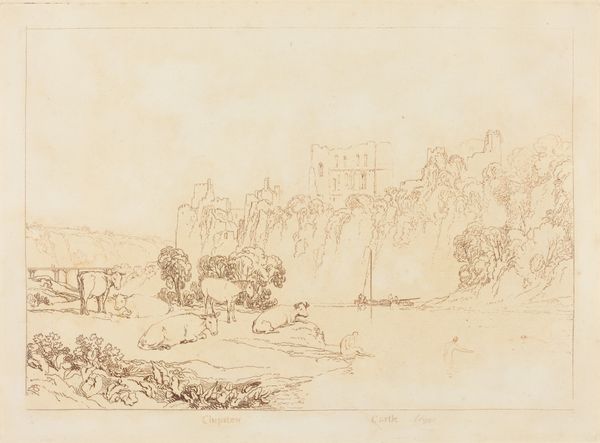
drawing, print, paper, ink
#
drawing
#
neoclacissism
# print
#
landscape
#
paper
#
ink
#
romanticism
#
cityscape
Dimensions: sheet: 14 15/16 x 19 3/8 in. (38 x 49.2 cm)
Copyright: Public Domain
Curator: Joseph Anton Koch, in 1810, captured this sprawling cityscape, titled "Ruins of the Imperial Palaces in Rome." He worked primarily with ink on paper, giving us this tremendously detailed drawing, currently held here at the Metropolitan Museum of Art. My first impression is dominated by the drawing’s muted tonality. Editor: Muted is definitely the word. I feel a profound sense of serenity, almost melancholic. The soft lines of the pen create a harmonious dreamscape effect—everything seems gently touched by time, or perhaps by memory. It's more like a beautifully faded photograph than a ruin. Curator: Koch’s work straddles the Neoclassical and Romantic periods. The emphasis on the classical subject is definitely in line with the Neoclassical trend of the era, where antiquity symbolized an ideal. At the same time, this interest in historical landscapes coincides with a fascination with nature within Romanticism. So we have both interests present in one piece. Editor: Exactly. And note that even though Koch focuses on ruins, there is not the sort of decadent morbid fascination with them. Instead, you sense a deep respect, or longing. I love how nature kind of gently encroaches, intertwining with these crumbling monuments as though claiming them back into its embrace. What did Rome, the seat of empires and a source of art itself, symbolize at this point? Curator: The Napoleonic occupation of Rome had just recently ended around the time of its creation. The artwork depicts the ruins as both a physical reality, with crumbling arches and scattered stones, but it is also a symbolic state for the political history. Koch reminds the viewer of cycles of civilizations. Editor: I love how Koch makes no clear division between foreground and background, instead guiding our gaze between lounging figures, sheep, vegetation, all the way to distant city structures. It makes you wander around, pondering life’s transience, while acknowledging the past’s importance in informing our future. Curator: Precisely, Koch is placing contemporary life squarely within the arc of time. And while those figures and their flocks could signal decline, the sheer amount of life implies continuation, maybe even hope, among those beautiful remains. Editor: It all feels like such a nuanced reflection, skillfully and creatively interwoven in Koch's detailed depiction. He really lets the landscape whisper its story of ruins and time itself. Curator: A beautiful piece for thinking about time and change.
Comments
No comments
Be the first to comment and join the conversation on the ultimate creative platform.


